Dove possono essere visualizzati i contenuti di e-commerce su Google
Google dispone di diverse piattaforme in cui possono essere visualizzati i tuoi contenuti di e-commerce, ad esempio nei risultati di ricerca e su Google Maps. Fornire i contenuti giusti sulla piattaforma Google appropriata può aiutarti a raggiungere nuovi potenziali clienti.
Google può mostrare contenuti di e-commerce sulle seguenti piattaforme:
| Piattaforme | |
|---|---|
Ricerca GooglePer scoprire di più sulle tecniche che possono migliorare il tuo ranking nella Ricerca Google, consulta la Guida introduttiva all'ottimizzazione per i motori di ricerca (SEO). Per un esempio dei diversi modi in cui Google può presentare i tuoi risultati, consulta l'elenco del markup dei dati strutturati supportato dalla Ricerca Google. |
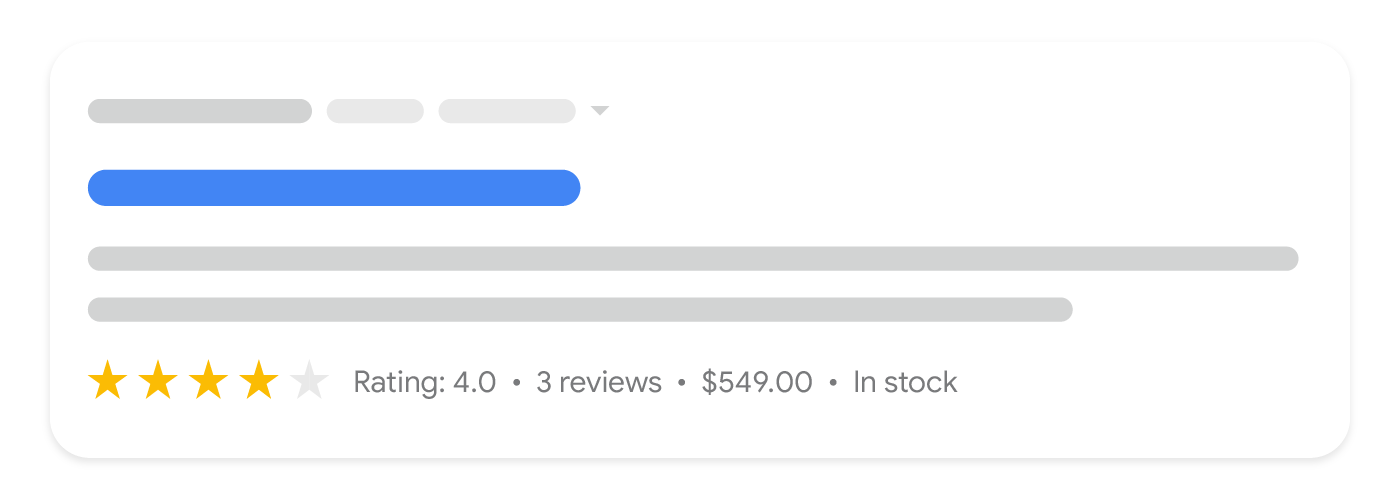
|
Google ImmaginiPer indicazioni su come preparare al meglio le tue immagini per l'indicizzazione da parte di Google, consulta le best practice per Google Immagini. |
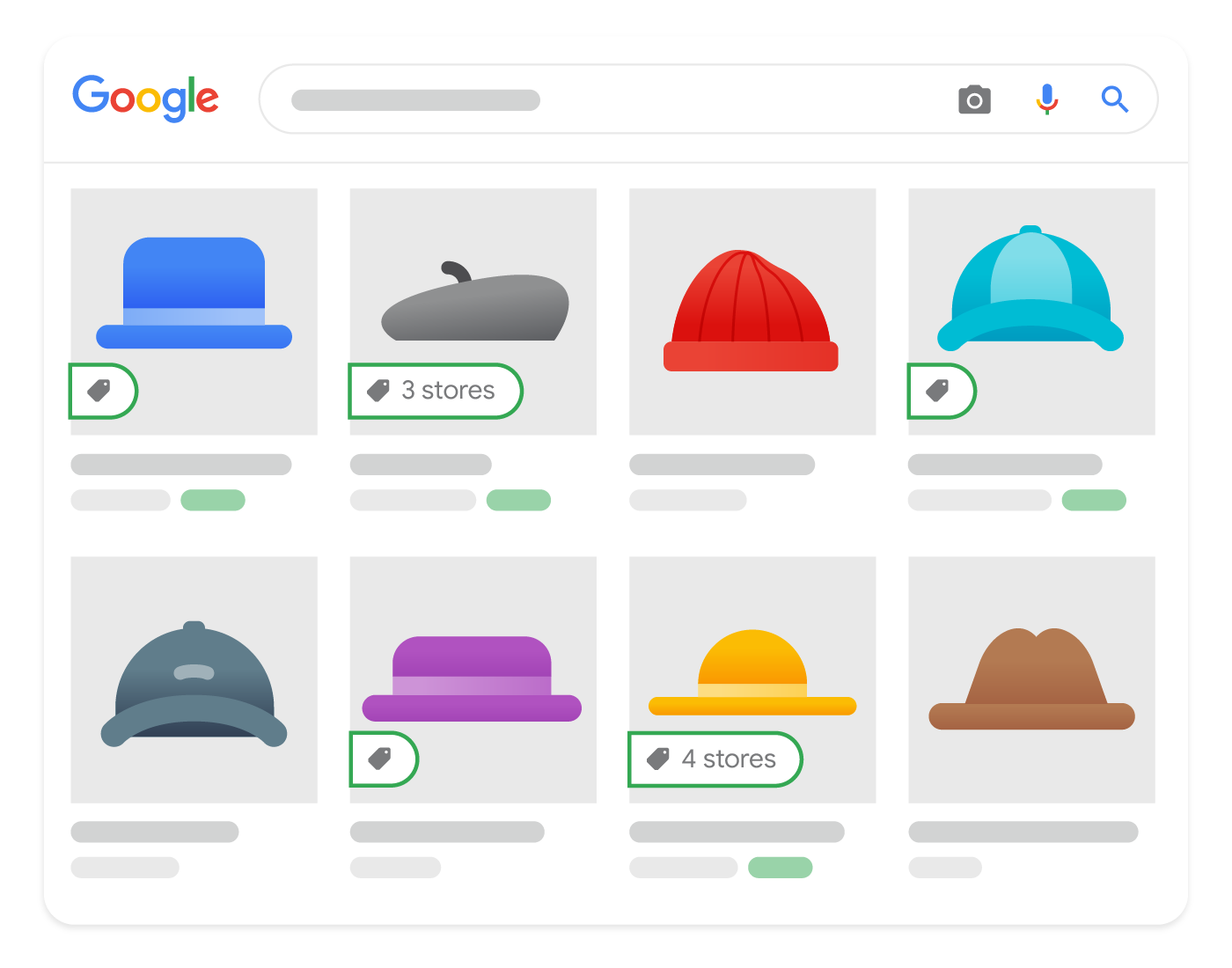
|
Google LensSe vuoi che i tuoi prodotti vengano trovati nei risultati di ricerca di Google Lens, assicurati che i dettagli dei prodotti siano caricati su Google Merchant Center, attiva le schede di prodotto e segui le best practice per Google Immagini. |
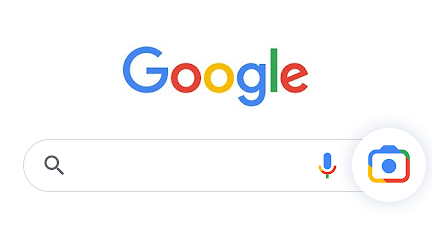
|
Scheda Google ShoppingSe vuoi che i tuoi prodotti vengano visualizzati nella scheda Google Shopping, caricali su Google Merchant Center. |

|
Profilo dell'attivitàPer fornire i dettagli della tua attività su Google, rivendica il tuo profilo dell'attività e collega i profili dell'attività e Merchant Center. |
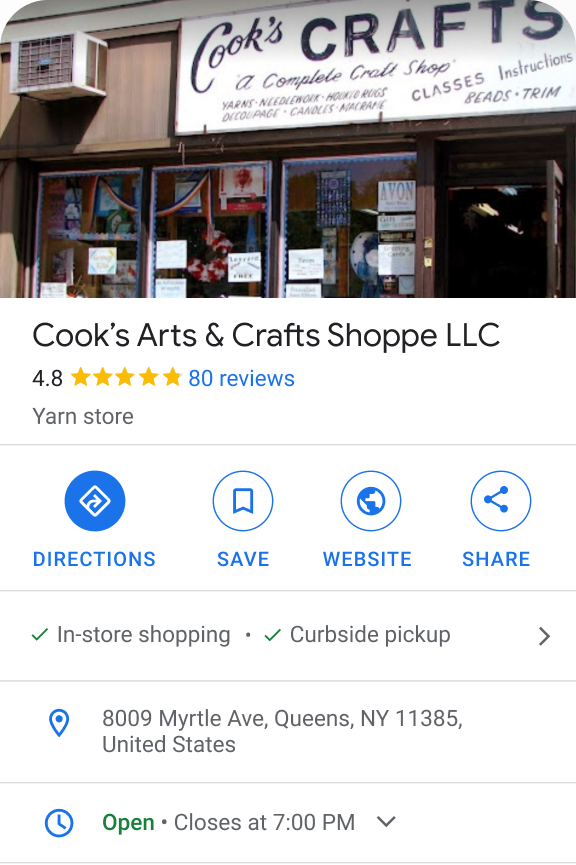
|
Google MapsPer rendere i tuoi prodotti disponibili nei risultati di ricerca di Google Maps, carica i prodotti con i dati sulla posizione dell'inventario su Google Merchant Center. Per informazioni dettagliate, consulta la Guida all'onboarding per gli annunci di prodotti disponibili localmente. |
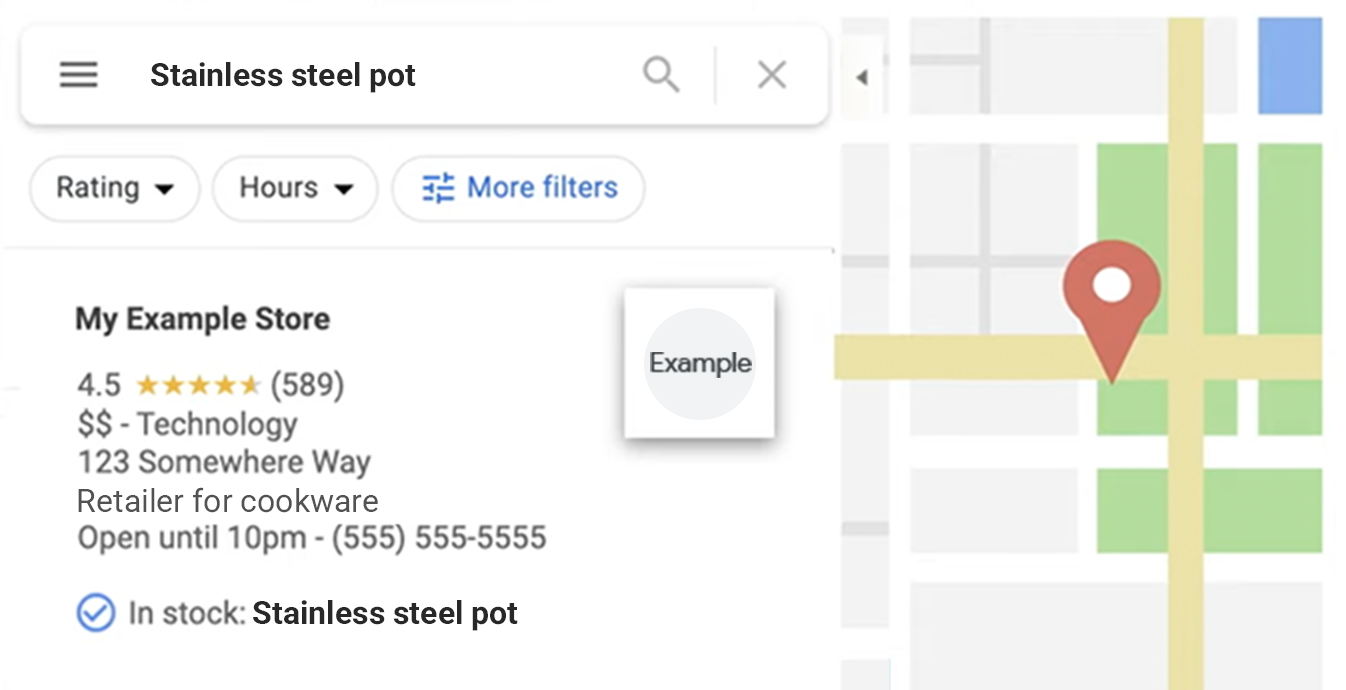
|
Creare contenuti di e-commerce per soddisfare le diverse esigenze dei clienti
I dati di prodotto sono il tipo più ovvio di contenuti correlati all'e-commerce, ma anche altri tipi di informazioni possono essere utili per gli acquirenti nelle varie fasi del loro percorso di acquisto. Ecco alcuni esempi di contenuti che potrebbero aiutarti a raggiungere i clienti su più piattaforme su Google:
- Storia della tua azienda. Descrivi la storia della tua attività agli acquirenti interessati a saperne di più.
- Offerte speciali. Descrivi le tue offerte speciali durante specifici eventi di vendita stagionali, come la festa della mamma.
- Recensioni dei prodotti fornite dal commerciante. Dimostra che vuoi aiutare gli acquirenti a trovare il prodotto più adatto alle loro esigenze fornendo recensioni approfondite dei prodotti che vendi. Se crei link a prodotti su siti di terze parti per ricavarne un profitto, consulta le nostre istruzioni sui link a pagamento.
- Recensioni dei prodotti fornite dai clienti. Valuta la possibilità di accettare valutazioni e recensioni dei clienti per aiutare i nuovi acquirenti a comprendere meglio i tuoi prodotti.
- Il tuo catalogo. Fornisci descrizioni informative dei prodotti che corrispondono ai termini di ricerca utilizzati dagli acquirenti quando cercano un prodotto specifico. Fornisci anche descrizioni delle categorie per includere query meno specifiche.
- Opportunità di formazione. Condividi i dettagli relativi a workshop o lezioni che offri per aumentare il coinvolgimento dei clienti. Ad esempio, una pasticceria potrebbe tenere un corso sulla decorazione di torte, in particolare se vende torte decorate sul suo sito. Consulta anche la pagina Pubblicare i propri eventi su Google per informazioni sui dati strutturati che possono essere utilizzati con gli eventi.
- Live streaming Interagisci con i tuoi clienti in occasione di live streaming interattivi in cui mostri i tuoi prodotti, spieghi come utilizzarli e rispondi in diretta alle domande che ti vengono poste.
- Touchpoint dell'assistenza clienti. Rafforza la fiducia dei clienti indicando chiaramente le norme sui resi e sulle spedizioni (inclusi eventuali sconti sul trasporto in base alle dimensioni dell'ordine) e mettendo in evidenza i punti di contatto dell'assistenza clienti.
